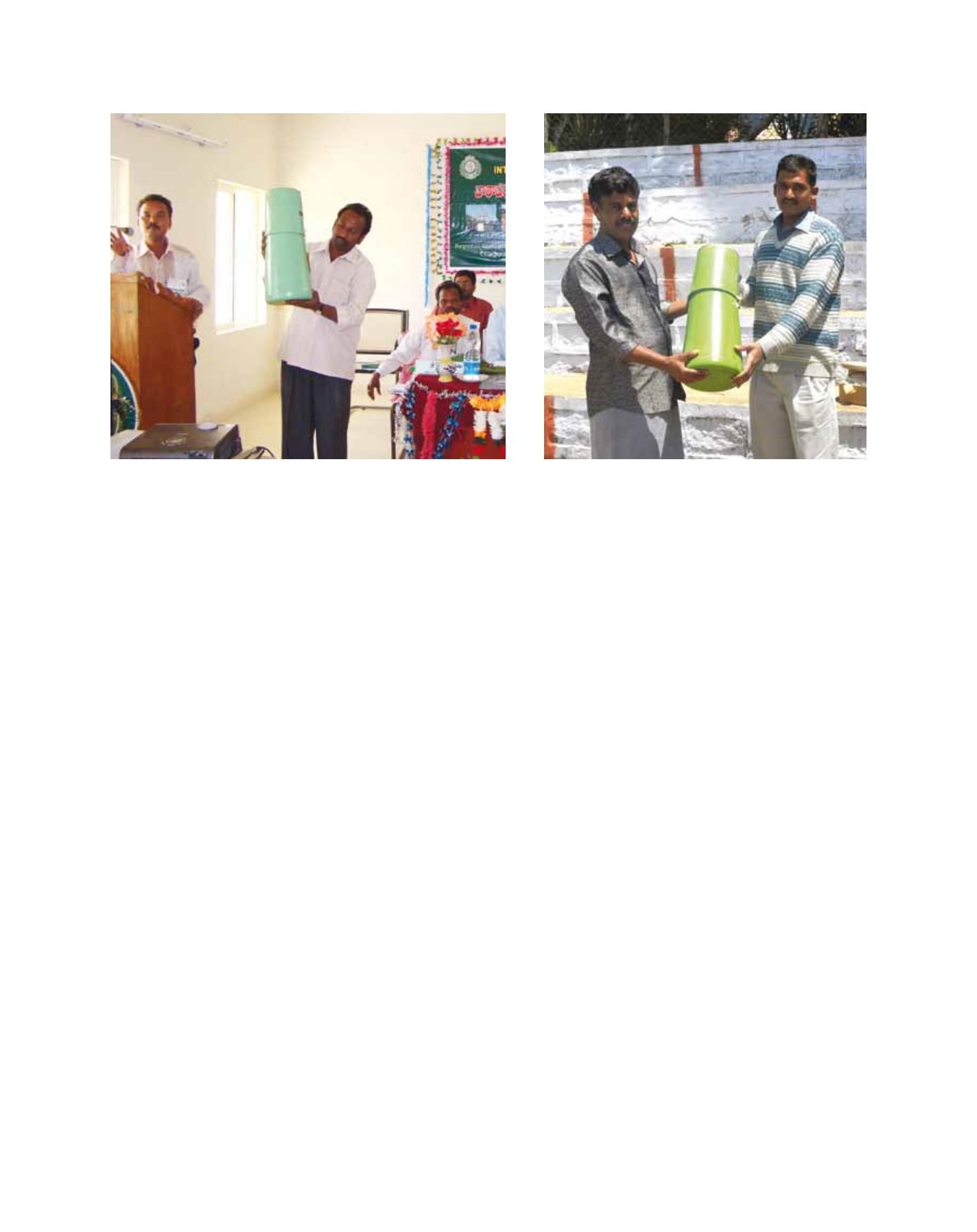

[
] 21
A
griculture
tions on how to install and use rain gauges to record
information. At present these rainfall data are being
communicated to the AMFUs and used to prepare
agromet advisories.
Rain gauges for farmers
It has been observed that inmost villages there is at least one
farmer who is relatively knowledgeable and educated, and
other local farmers are obliged to this person for his or her
meaningful advice on crop cultivation. Thus, this individual
is indirectly identified as a progressive farmer whose advice
is beneficial in farmmanagement.
In order to improve the linkages with the AAS system
and develop a local (village) level rain measuring network,
five rain gauges made of plastic are distributed to a group of
progressive farmers selected by AMFU during the meeting.
These farmers are then trained to record and report the
rainfall observation to the relevant AMFUs, which in turn
communicate it to IMD.
The farmers are familiarized with the measurement
of rainfall by ordinary rain gauges and told about IMD’s
proposed plan for development of a village-level rain meas-
uring network in the country. The purpose of distributing
the rain gauges is to involve farmers in the observation of
weather data and in the preparation of agromet advisories
so they can share their observations with all the relevant
AMFUs and help to produce location-specific advisories. At
present there are 264 agromet observatories where observa-
tions are taken, including morning rainfall measurements.
The quality of the farmers’ rainfall data is regularly moni-
tored by AMFU and IMD.
Demonstrations for the public
As a part of the programme, some AMFUs have organ-
ized exhibitions and demonstrations highlighting various
Processes and mechanisms
During the one-day programme, the first half of the day consists of
lectures given by atmospheric scientists, meteorologists, agromete-
orologists and experts in different disciplines of agriculture (such as
entomologists, pathologists, soil scientists, agronomists) in the local
language to promote a good dialogue with farmers. The programmes
also aim to assess how the Agrometeorological Advisory Service (AAS)
can be made more relevant to the local needs of the farming commu-
nity. The second half of the day includes discussions about farmers’
existing knowledge of the use of weather and climate in agriculture
and risk management, needs for weather and climate information and
ways to improve the communication of this information to farmers. As a
number of farmers in rural villages are not fully aware of AAS and do not
know about the possible connection between weather and the farming
system, they are first appraised on these subjects so they can understand
the merits and limitations of the service in relation to various weather-
related practical problems they face in agriculture. Primary emphasis
is given to a free and frank exchange of ideas and information. This
part of the programme is designed to engage all the participants in
discussions and obtain full information about their needs for weather
and climate information, and how to improve future communication
of this information to enable an effective operational decision-making
process. Important discussions between resource providers and the user
community focus on the use of weather data and weather forecasting in
AAS, climate change and climate variability, extreme events, dissemina-
tion, animal husbandry and so on. All the resource providers are given
proper training on operational agrometeorology by IMD, which also
organizes seminars on this subject for in-depth discussions with the
people assigned to conduct the Farmer Awareness Programme.
Farmers receive informative brochures; pamphlets outlining
weather-based farming guidelines; information on packages and
crop practices in the district; leaflets containing information about
pests and diseases, severe weather conditions, crops grown under
stress conditions and inbuilt contingency plans; and the District
Agromet Bulletin – all in local languages. There are also demonstra-
Image: India Meteorological Department
Farmers are provided with rain gauges by the programme
By getting involved in the observation of weather data, farmers can help
to produce location-specific agromet advisories
















